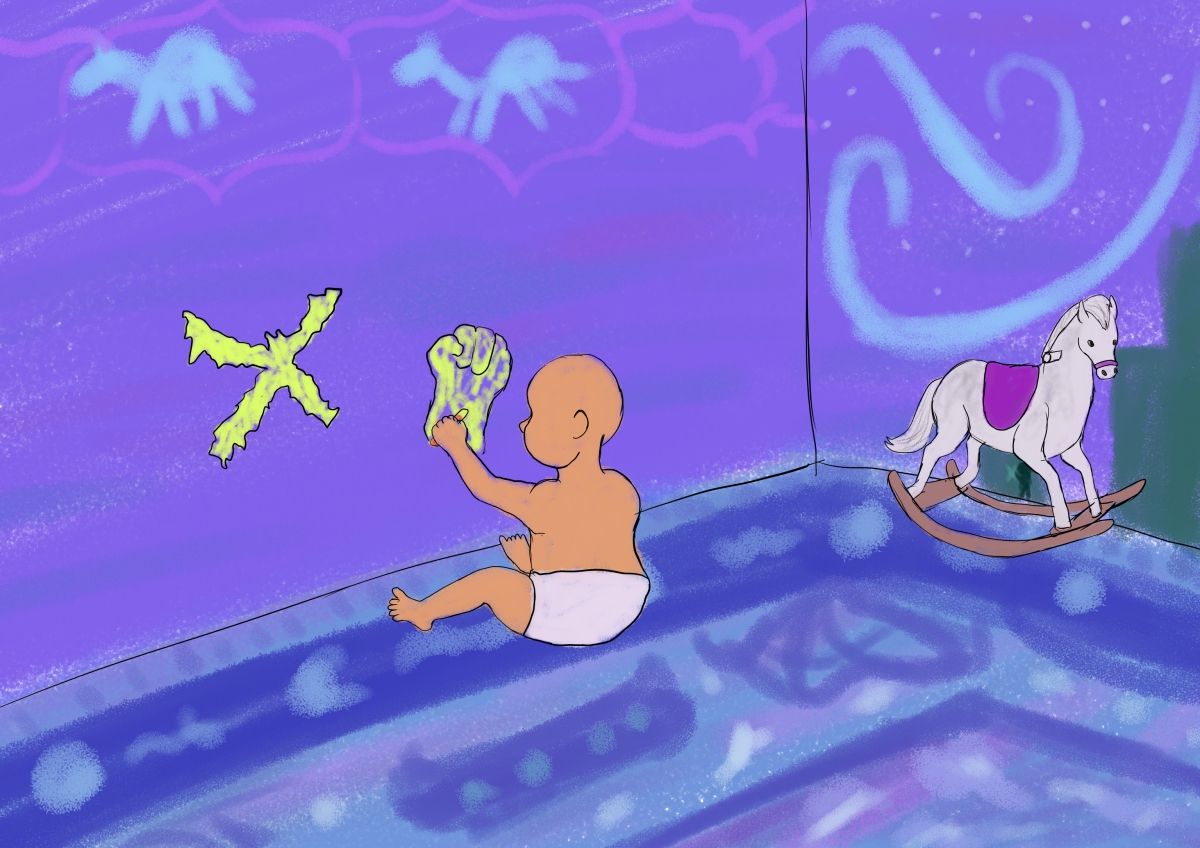Graffiti
The words of the prophet are written on the subway walls.

The words of the prophet are written on the subway walls.
One of my favourite stories from the Arabian Nights is that of Ali Baba and the Forty Thieves. I especially love the part where the thieves’ accomplice marks Ali Baba’s house with a secret symbol so his house can be recognised. Ali Baba’s clever servant girl, however, intercepts the gangsters’ code, and draws the same motif on every wall in the locality to confuse the bandits.
I love her on-the-feet thinking here, but I have always imagined how frustrating it must have been for the people to clean up their houses after! You can almost see the mayor of the town pinching the bridge of his nose in frustration when he hears of this motif-making mischief-maker (“Why…why…...And we had just repainted everything…” he cries).
Why, though, would the mayor be cross? What is wrong with a small symbol on a wall?
Walls have been adorned with shapes and colours since before we can remember. 45,000 years ago, our ancestors were making drawings of warty pigs in Sulawesi, Indonesia. Today, the hashtag #warliart has more than 635K views on TikTok. So much between these two ends of a spectrum has just been humans reaching up to leave their mark on a wall.
In all of these wall paintings, humans depicted what mattered to them then: food, fear, family, or fun. And they continue to depict what matters to them, even now. Laneways in Bombay pay tribute to the home of Bollywood, while metro stations in Bangalore celebrate the skills of the art and design students who study in the city. A 90-year old lady in the Czech Republic spends her days painting pretty flowers on street walls. And almost every toddler with a crayon has ruined a clean wall with implied artistry.
Art is an expression, and wall art is no different. It is a profession, even, with advertising companies and governments commissioning artists to adorn public walls—to sell a concept, to send a message, to inform or educate people, or even to simply hide cracks in the old paints.
And yet, and yet there are entire petitions to remove scribbles from walls in our cities, even though they may be benign (not a threat like what the Forty Thieves did).
Why are those markings a problem?
What is it about just a symbol or a line of text that can cause discomfort, evoke fear, make municipal committees repaint entire lanes? What is appropriate, and what is to be scrubbed away in denial?
The Oxford dictionary defines graffiti (noun) as, “Drawings or writing done on a wall, etc. in a public place without permission”.
It is the ‘permission’ part that makes graffiti different from regular wall art. Warli art, for instance, won’t ever be called graffiti. Warli is a cultural norm, expected or commissioned, and celebrated by the public; it is an ‘acceptable’ form of wall art. Nothing is disturbing or disruptive in a warli painting.
But there is a sense of a rebel in the word ‘graffiti’ itself. The root of the word is ‘graffio’, the Italian word for a scratch. It conveys a bit of defiance; a hint of vandalism, an act of defiling someone else’s property.
The examples that come with the aforementioned definition are interesting, too.
The subway was covered in graffiti.
Someone had scrawled graffiti all over the school walls.
Notice the use of the verbs ‘covered’, and ‘scrawled’; ‘cover’ implies causing something to be hidden, and ‘scrawled’ suggests a lack of finesse, a flippant sort of approach to the creation. Both allude to the art being unexpected, unartistic, and most of all, unwelcome.
A lot of wall art is scribbles. The Romans had graffiti, complete with political caricatures and ‘yo mama’ jokes. And there are countless monuments in India with Sonu loves Preeti type etchings that the Archaeological Survey of India sobs about.
But not all graffiti is self-serving, or unpleasant to look at. It is disruptive, yes, visually and socially. But it is often beautiful, and it makes one think.
Consider the works of artists Keith Haring, or Jean-Michel Basquiat, who are having a revival of sorts right now. Their artwork is sold in countless merch stores, and sees collaboration with the biggest brands all over. And yet they started off in relative anonymity. Haring drew extensively about the AIDS crisis and homosexuality, and his colourful, accessible style made the topics palatable and humane. Basquiat’s avant-garde, abstract style, meanwhile, took inspiration from and acknowledged his link with the hip-hop culture of the masses, which he employed to make cutting social commentaries.
Both Haring and Basquiat’s works gained favour as their visuals became ubiquitous and fashionable, but it was the message within that made viewers first listen.
Closer to the modern day, Banksy is perhaps our best-known (and invisible) street artist. His unabashed anti-war and anti-capitalist work is synonymous with silent protest, as is his satirical commentary on current affairs.
And on a lighter note we have Wanksy, who called out governing bodies and forced them to take action. Was his artwork disturbing? Yes. Socially uncomfortable, expressing unsaids? Yes. Did it also call out those in power, and quite literally get the job done? Yes.
The words of the prophet are written on the subway walls. By writing out loud what is being felt silently, a graffiti artist enables a conversation to exist. Whether that statement gets covered up (or commissioned and appropriated) is a different matter.
Graffiti is a form of visual disturbance, a vandalism of public space. Because it is a way of claiming space, claiming a voice. It is adornment, yes; a group of vagabonds scribbling just to make trouble. But it is often also speaking to a power that has not been listening.
Because the question isn’t about why graffiti exists in a certain area; it is about why it gets painted over afterwards.
